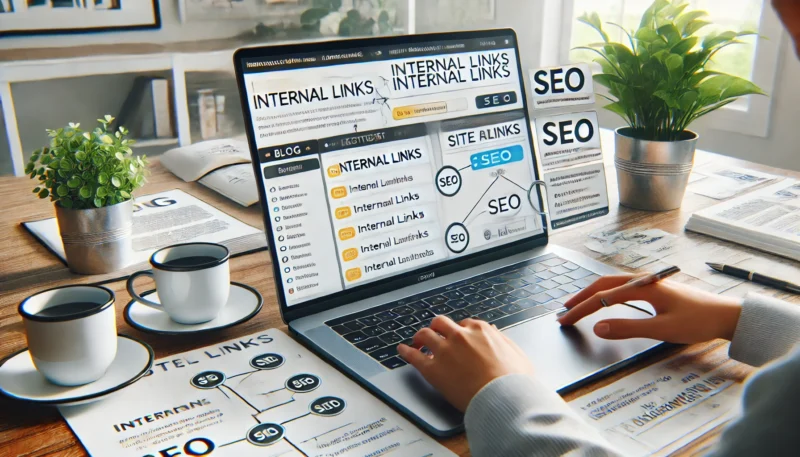Internal linking is one of the most underrated — yet most powerful — SEO strategies. While backlinks get most of the attention, how you connect your own content matters just as much.
A strong internal linking structure helps search engines understand your website’s hierarchy, improves crawlability, and enhances the user experience. In this article, you’ll learn what internal linking is, why it’s crucial, and how to implement it strategically for SEO success.
What Is Internal Linking?
Internal links are hyperlinks that point to other pages within the same website.
Example:
👉 If you’re reading a blog post about keyword research and it links to another post about SEO tools — that’s an internal link.
These links guide users and search engines through your site and help distribute authority across pages.
Why Internal Linking Matters for SEO
1. Improves Crawlability
Search engine bots use links to crawl your site. If a page has no links pointing to it, it’s harder to discover — and may not get indexed.
2. Passes Link Equity (Authority)
Also known as “link juice,” internal links transfer value from one page to another, helping important content rank higher in search results.
3. Establishes Site Hierarchy
Links between cornerstone content and related articles create a clear site structure, showing search engines which pages are most important.
4. Increases User Engagement
Helpful internal links keep readers on your site longer by guiding them to relevant content. This reduces bounce rate and increases time-on-page — both positive SEO signals.
Types of Internal Links
-
Navigational links: Found in menus, footers, and sidebars
-
Contextual links: Placed within body text to guide users to related topics
-
Image links: Embedded in images (use ALT text for SEO value)
-
Call-to-action (CTA) links: Direct users to other key pages (e.g., sign-up, read next)
Best Practices for Internal Linking
1. Use Descriptive Anchor Text
Avoid generic phrases like “click here”. Instead, use relevant, keyword-rich phrases that describe the linked content.
✅ Example: Learn how to improve website speed for better SEO.
2. Link to Relevant, Related Content
Don’t link just for the sake of it. Make sure the destination page truly adds value or context for the reader.
✅ Example: If you’re writing about on-page SEO, link to a detailed guide on meta tags.
3. Use a Logical Link Structure
Your site should follow a pyramid structure:
-
Homepage
→ Category pages
→ Individual blog posts or product pages
Make sure each page links up and down the hierarchy where appropriate.
4. Don’t Overdo It
Too many links in one section can overwhelm both users and search engines. Aim for:
-
2–5 internal links per 1,000 words
-
Natural placement within the content
-
No more than 100 total links on a single page
5. Update Old Content with New Links
Every time you publish a new post, go back to older posts and add links to the new content. This keeps your site structure fresh and helps new pages get indexed faster.
6. Use Tools to Audit Internal Links
Try tools like:
-
Ahrefs Site Audit
-
Screaming Frog SEO Spider
-
Google Search Console (Coverage & Links reports)
-
Yoast SEO or Rank Math (WordPress)
These help you find orphan pages, broken internal links, and linking opportunities.
Common Internal Linking Mistakes
-
Linking every page to the homepage (adds no SEO value)
-
Using the same anchor text for multiple destinations
-
Not linking deep into content (only linking to main pages)
-
Having important pages with no internal links (orphaned content)
How Many Internal Links Should You Use?
There’s no fixed number, but quality > quantity. Link where it’s helpful, not where it feels forced.
Focus on:
-
Linking topical clusters together
-
Reinforcing key content through multiple contextual links
-
Ensuring every page has at least one internal link pointing to it
Final Thoughts: Internal Links Are a Silent SEO Power Tool
Internal linking is more than just navigation — it’s a strategic SEO move that boosts rankings, improves user flow, and helps search engines understand your content.
If you haven’t been intentional about it, now is the time to start. Review your existing content, identify linking opportunities, and build a structure that supports both users and bots.
Small changes in internal linking can lead to big gains in traffic.

